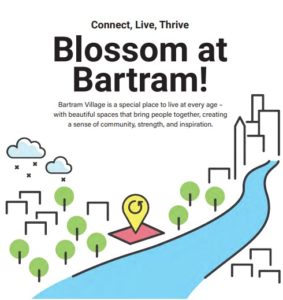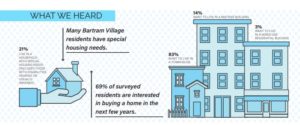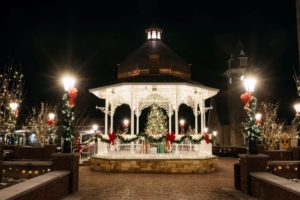The Latest News from PA Chapter of APA…
 The next Webinar Wednesday, Hello, It’s Me: Introducing PA-SHARE, is scheduled for January 6, 2021 from 12:00 p.m. to 1:00 p.m. As the primary interface for all PA State Historic Preservation Office programs, PA-SHARE will enable users to submit and track projects in real-time, receive confirmation of submissions and expedited communication, and access more than one million pages of information about historic properties and archaeological sites. This event is free for all PA Chapter members and is pending 1 CM credit.
The next Webinar Wednesday, Hello, It’s Me: Introducing PA-SHARE, is scheduled for January 6, 2021 from 12:00 p.m. to 1:00 p.m. As the primary interface for all PA State Historic Preservation Office programs, PA-SHARE will enable users to submit and track projects in real-time, receive confirmation of submissions and expedited communication, and access more than one million pages of information about historic properties and archaeological sites. This event is free for all PA Chapter members and is pending 1 CM credit.
For more information >>
If you are interested in sponsoring a Webinar Wednesday session or have a session for Webinar Wednesday, please contact us. Send your request to info@planningpa.org
The Chapter’s Legislative Committee has completed three individual Policy Statements on Green Infrastructure, Housing, and Surface Transportation, and they were unanimously approved by the Board at our December 17, 2020 meeting. Each statement can be found on PA Chapter’s website.
We would like to thank the legislative committee for their time and efforts in developing these documents for our Chapter.
Each year the Chapter offers a scholarship to support individuals seeking funds for academic degree programs, internships, and professional development activities. If anyone would like to contribute to the Chapters Scholarship fund, donations can be made on the Chapter website. We accept all major credit cards, and you can also send a check. Please make your check payable to “PA Chapter of APA Scholarship Fund” and mail it to P.O. Box 4680, Harrisburg PA 17111.
Chapter Award Highlight: Blossom at Bartram
 Blossom at Bartram received an Award for a Plan at the Chapter’s 2020 Virtual Planning Conference. Bartram Village Choice Neighborhood is a 22-acre site located in Southwest Philadelphia, bounded by the Schuylkill River. The Philadelphia Housing Authority and other key partners, including the US Dept. of Housing and Urban Development, Bartram Village Resident Council, Pennrose Development, PIDC, and WRT, LLC, worked to create a neighborhood plan to address critical issues within the community. This plan provides a game plan for the Bartram community to blossom.
Blossom at Bartram received an Award for a Plan at the Chapter’s 2020 Virtual Planning Conference. Bartram Village Choice Neighborhood is a 22-acre site located in Southwest Philadelphia, bounded by the Schuylkill River. The Philadelphia Housing Authority and other key partners, including the US Dept. of Housing and Urban Development, Bartram Village Resident Council, Pennrose Development, PIDC, and WRT, LLC, worked to create a neighborhood plan to address critical issues within the community. This plan provides a game plan for the Bartram community to blossom.
 Innovate tools to involve residents in the planning process included a summer festival, leadership series, a bus tour, and a Walkshop. Neighborhood Ambassadors were used to create a buzz about Bartram Choice. The outcome was a plan that focused on three major themes: Connect, Live, and Thrive. Designed with colorful pages to draw attention to the essential facts, the plan supplements those pages with detailed content of each Chapter. Utilizing simple graphics and icons to demonstrate issues (What We Heard), the plan brings together concepts in an easy-to-read fashion. Then it provides goals and strategies to address those issues. Finally, Early Action Activities are outlined in the implementation section, with additional areas for including future action items. Blossom at Bartram! provides essential tools and strategies to improve this Philadelphia neighborhood and results from a successful planning process.
Innovate tools to involve residents in the planning process included a summer festival, leadership series, a bus tour, and a Walkshop. Neighborhood Ambassadors were used to create a buzz about Bartram Choice. The outcome was a plan that focused on three major themes: Connect, Live, and Thrive. Designed with colorful pages to draw attention to the essential facts, the plan supplements those pages with detailed content of each Chapter. Utilizing simple graphics and icons to demonstrate issues (What We Heard), the plan brings together concepts in an easy-to-read fashion. Then it provides goals and strategies to address those issues. Finally, Early Action Activities are outlined in the implementation section, with additional areas for including future action items. Blossom at Bartram! provides essential tools and strategies to improve this Philadelphia neighborhood and results from a successful planning process.
Great Places in Pennsylvania Spotlight
 The Great Places in Pennsylvania program began in 2014. This program highlights places in the Commonwealth that are prime examples of good planning and are centerpieces of their communities, highlighting connectivity, community engagement, and economic opportunity. Each month, we will highlight a recent Great Places award winner.
The Great Places in Pennsylvania program began in 2014. This program highlights places in the Commonwealth that are prime examples of good planning and are centerpieces of their communities, highlighting connectivity, community engagement, and economic opportunity. Each month, we will highlight a recent Great Places award winner.
Ligonier Diamond Park was designated as a Great Place in 2019 in the Great Public Space category. Ligonier Diamond Park is located in the Borough of Ligonier in Westmoreland County. Established in 1894, Diamond Park is approximately 6 acres and makes up most of the historic area of Ligonier. It is the heart of Ligonier as it is bordered by sidewalks and a ring of unique shops, eateries and civic buildings including Ligonier Library, Town Hall and Heritage Methodist Church.
The park is able to accommodate large and small crowds. It features seating areas, a mix of large and small trees and a newly-refurbished fountain. The unique feature and focal point of the park is the copper-domed, octagonal gazebo. The gazebo functions as a bandstand for concerts and special events throughout the borough’s civic calendar. Ligonier Park is host to Fort Ligonier Days, Ligonier Ice Festival and the Sunday Band Concert Series. The park has also served as a wedding venue and a backdrop for photo sessions.
In 2016, stakeholders from Ligonier Parks and Recreation, Ligonier Borough Council, Ligonier Valley Chamber of Commerce, the Richard Mellon Foundation and the EADS Group worked to plan and design improvements to the park with public input. Improvements to the gazebo including wider stairs, a new stone veneer, new railing and flooring and a new copper roof were completed in 2018. In addition, new lamp posts, new speakers and radiant tubing in the sidewalks were installed to allow visitors to enjoy the park for years to come.
Striking a Balance in a Regional Stormwater Plan in York County
Being in the Chesapeake Bay watershed, the 2013-2018 MS4 Permit cycle required many York County municipalities to create Chesapeake Bay Pollutant Reduction Plans (CBPRPs). The County’s Integrated Water Resources Plan, a component of the County’s Comprehensive Plan, as well as the York County Watershed Implementation Plan, recommended a Regional CBPRP. With support from PA DEP and with the York County Planning Commission leading the effort, each municipality (all 72!) was invited, free of charge, to participate in a regional plan.
The York County Stormwater Consortium formed in 2014 to implement the 2013-2017 Regional CBPRP through an Intergovernmental Cooperation Agreement. The Consortium remains strong and the Agreement was reauthorized in 2017 to implement the 2018-2022 Regional CBPRP. The Agreement lays out a governance structure, policies, and a fee schedule. MS4 Permittee fees are based on a formula, while others pay a nominal flat fee. Money saved from cost efficiencies was directed to putting pollutant reducing projects on the ground.
Participants include 27 municipalities with an MS4 Permit, 16 municipalities with an MS4 Waiver (including the County of York), and 2 non-MS4 municipalities. Each municipality appoints 2 representatives to the Regional Committee, which elects 7 of its Primary Voting members to serve on the Management Committee.
In the current cycle, 11 BMP projects were completed through June 2020 at a cost of roughly $2.4 million. The Consortium contributed about $217,000 and leveraged the balance through other sources. This truly demonstrates the Consortium’s success in obtaining grant funds, developing partnerships, and using municipal fees wisely. This regional initiative provides multiple benefits resulting in improved water quality for York County and the Chesapeake Bay.
Whether you are a newer member or have been with us for many years, we encourage you to check out our new Orientation Guide. From who we are and what we do to the many events and services offered to members – you might just find a new way to interact and engage with APA PA.
We also challenge you, as members, to pass along the guide and a friendly word to colleagues and community members who may be thinking of joining. APA PA relies on the strength and diversity of our membership to better serve planners and the profession. We couldn’t do it without you!
Chapter Planning Profile: Susan Myerov, AICP
 While attending one of the Chapter’s annual conferences, or perhaps when working on watershed planning, you may have met Susan Myerov, the Watersheds Program Director for the Pennsylvania Environmental Council (PEC). Sue’s work for PEC takes her all over the state, and to learn more about her watershed team, check out this story.
While attending one of the Chapter’s annual conferences, or perhaps when working on watershed planning, you may have met Susan Myerov, the Watersheds Program Director for the Pennsylvania Environmental Council (PEC). Sue’s work for PEC takes her all over the state, and to learn more about her watershed team, check out this story.
We had a chance to catch up with Sue to hear about her career and interests.
What’s your favorite place in Pennsylvania?
Pennsylvania is such a beautiful state that it’s challenging to pick just one location. The Jim Thorpe area, with its historic town, connected trail system, and beautiful setting comes to mind. Of course, the City of Philadelphia where I grew up and currently work and my community in Abington Township need to be included. I live near the headwaters of the Tookany/Tacony-Frankford Creek watershed, where I serve on the watershed board, and whose creek system flows through the township and provides some unique places to visit.
What did you want to be when you were growing up?
An artist. I always liked drawing, theater, and music and have often been involved in putting together newsletters and other graphic communications. This has helped my work as a planner because I believe that planners are translators of information for the public.
What was your first planning job?
My first planning job was in Hartford, Connecticut, where I worked in redevelopment for 6 years. This is where I became interested in environmental planning, being involved in the revitalization of old riverfront land that had a lot of environmental issues.
What has changed in planning since you first started?
The way we share information has changed significantly. Nowadays, there are many more ways to convey information than existed in the old days of public meeting facilitation and newsletters. We now have social media, Google Earth, web-based design programs, GIS maps, satellite imagery – and even drone footage to help people understand planning ideas and context. I remember when taking a picture and putting a person in it digitally was really a big deal.
Who has influenced you?
I had a cousin, a professor at Penn State, who encouraged me to take my first introductory planning course. Then, Stan Lembeck, a professor of mine, helped direct me towards planning and my major of Man-Environment Relations. I also need to mention my friend and colleague at Heritage Conservancy, Mike Frank, who I admired for his depth of planning knowledge and his incredible ability to connect with his audience on any topic, something I still strive to do well.
Over the years, I have had the privilege to work with so many people who are passionate about the environment and have found they have influenced me in numerous ways.
I have to add that the planning community is great. Planners express interest in so many topics, and a conversation can go in lots of directions. I look forward to seeing my fellow planners at the annual chapter conference and always learn something new.
What three words best describe you?
Collaborative, thorough, considerate.
Where would we find you after work?
You’ll find me riding my bike or walking the local trails and natural areas in the region.
If you were “Planner Queen” for the day, what would you declare?
I would ask everyone to do one thing in their home that was sustainable to help the planet and environment. From planting a tree to using a rain barrel. There are so many different things we can do as individuals that together can make a huge difference in our communities.

